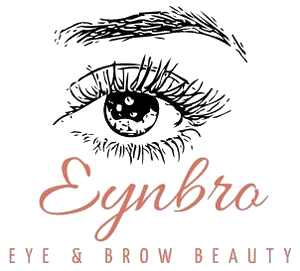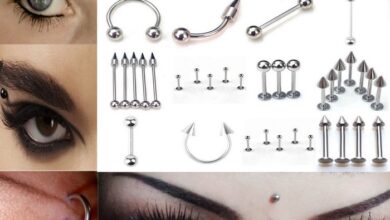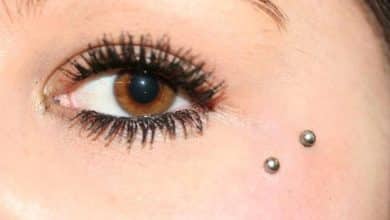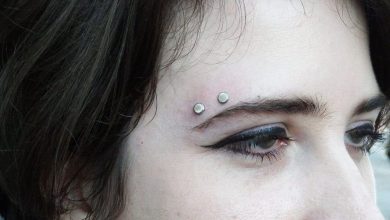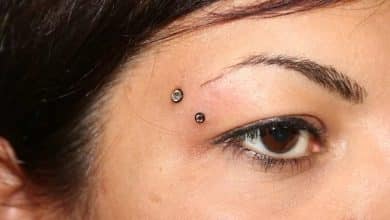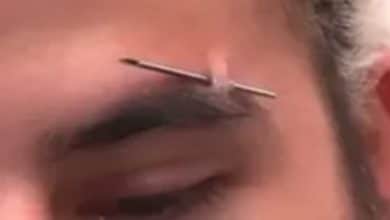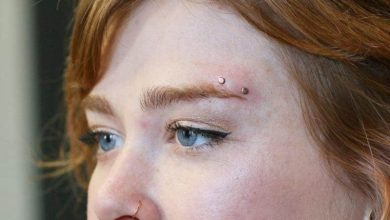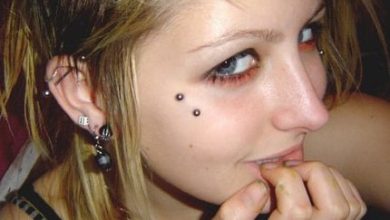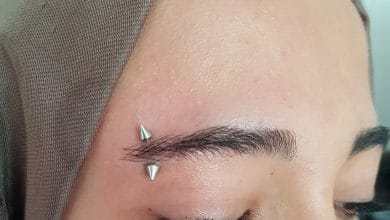Do Eyebrow Piercings Leave Lasting Scars?
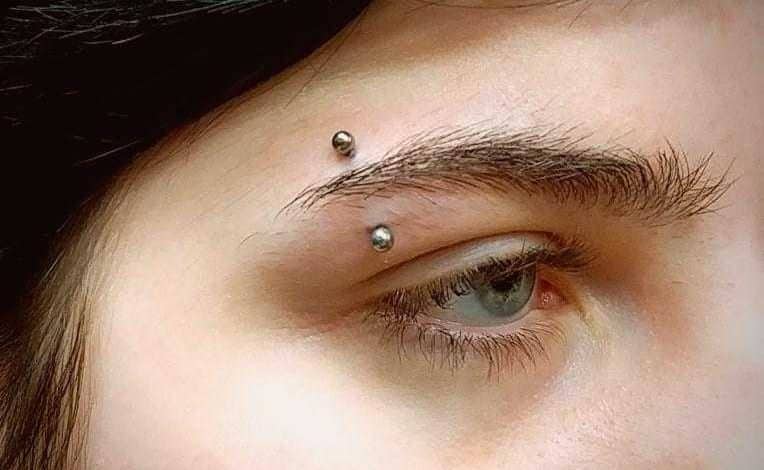
Eyebrow piercings have become increasingly popular as a form of self-expression and style. These unique piercings can add an edgy and trendy look to your appearance. However, before diving into the world of eyebrow piercings, it’s important to understand the potential long-term effects they can have on your skin. One common concern is whether eyebrow piercings leave lasting scars.
In this comprehensive article, we will explore the factors that can contribute to scarring, the healing process, and the risks associated with eyebrow piercings. We’ll also provide insights into minimizing the visibility of scars and offer guidance on selecting a reputable piercer. By understanding the potential impact of eyebrow piercings on your skin, you can make an informed decision and take the necessary steps to ensure a safe and successful piercing experience.
Key Takeaways:
- Eyebrow piercings can leave lasting scars, but the severity and visibility of scars vary from person to person.
- Factors such as personal healing abilities, jewelry material, and proper aftercare can influence scarring.
- It’s important to choose a reputable piercer, follow aftercare instructions, and be aware of individual risk factors such as keloid formation or metal allergies.
Eyebrow Piercings: An Overview
Eyebrow piercings involve the insertion of jewelry, typically a barbell, through the eyebrow. The piercing is usually located along the eyebrow ridge, above the eye. People opt for eyebrow piercings for various reasons, such as personal style, cultural significance, or as a form of rebellion.
The Healing Process
After getting an eyebrow piercing, proper care and maintenance are crucial for optimal healing and minimizing the risk of scarring. Healing time can vary from person to person, but it typically takes around six to eight weeks. During this period, it’s important to follow the aftercare instructions provided by the piercer, which may include:
- Regular cleaning with saline solution or a mild, fragrance-free soap.
- Avoiding touching or twisting the jewelry.
- Avoiding swimming pools, hot tubs, or bodies of water that may contain bacteria.
- Avoiding makeup or other cosmetics in the piercing area.
Adhering to these guidelines helps reduce the likelihood of infection, which can contribute to scarring.
Potential Scarring from Eyebrow Piercings
While proper aftercare minimizes the risk, some individuals may still experience scarring after eyebrow piercings. Scarring can result from a variety of factors, including individual healing processes, genetics, and the initial piercing technique.
The severity of scarring can also vary widely. Some people may develop minimal, almost unnoticeable scars, while others may experience more prominent or raised scars. It’s essential to remember that everyone’s body reacts differently to piercings, and scarring is not a guarantee but a possibility.
Preventing and Treating Scars
To reduce the likelihood of noticeable scarring from an eyebrow piercing, it’s important to take certain precautions:
- Choose a Professional Piercer: Opt for a reputable, experienced piercer who follows proper sterilization techniques and uses high-quality jewelry. A skilled piercer can minimize trauma to the skin, reducing the chances of scarring.
- Follow Aftercare Instructions: Strictly adhere to the aftercare instructions provided by your piercer. This includes avoiding any activities or substances that may hinder the healing process.
- Keep the Area Clean: Clean the piercing regularly using a saline solution or a mild, fragrance-free soap to prevent infection. Gently pat the area dry, avoiding excessive rubbing.
- Avoid Excessive Movement: Try to avoid touching or playing with the jewelry to prevent irritation and trauma to the piercing site.
If scarring does occur, various treatment options can help minimize its appearance:
- Silicone-based scar gels or sheets: These products help reduce the visibility of scars by hydrating and protecting the skin.
- Medicated creams or ointments: Certain over-the-counter or prescription creams containing ingredients like corticosteroids or retinoids can promote healing and reduce scar formation.
- Laser therapy: In more severe cases, laser treatments can be effective in minimizing scar visibility by stimulating collagen production and reducing discoloration.
Consulting with a dermatologist or a healthcare professional can provide personalized guidance on scar prevention and treatment based on individual circumstances.
Additional Considerations
While scarring is a potential outcome of eyebrow piercings, it’s important to consider other factors before making a decision:
Personal Healing Abilities: Every individual’s healing process differs. Factors such as age, overall health, and immune system function can influence how well your body heals from a piercing. If you have a history of slow healing or excessive scarring, it’s essential to discuss this with your piercer and consider the potential risks.
Jewelry Material: The type of jewelry used can impact the likelihood of scarring. High-quality materials like surgical-grade stainless steel, titanium, or gold are generally recommended for eyebrow piercings. These materials are less likely to cause irritation or allergic reactions, which can contribute to scarring.
Placement and Technique: The skill and precision of the piercer play a significant role in minimizing scarring. A professional piercer will carefully consider the placement of the piercing to avoid critical blood vessels, nerves, or other structures that could impede proper healing. They will also use sterile techniques to reduce the risk of infection.
Allergic Reactions: Some individuals may be allergic to certain metals used in jewelry, leading to complications and potential scarring. If you have a known metal allergy, discuss alternative jewelry options with your piercer to minimize the risk of adverse reactions.
Keloid Formation: Some people may be prone to developing keloids, which are raised and thickened scars that extend beyond the original wound. If you have a history of keloid formation, it’s crucial to carefully consider the risks associated with any type of piercing, including eyebrow piercings.
Long-Term Effects: It’s important to consider the potential long-term effects of an eyebrow piercing beyond scarring. For example, there may be a risk of jewelry migration or rejection, which could result in the need for removal and potential scarring.
It’s important to make an informed decision before getting an eyebrow piercing. Research reputable piercing studios, ask for recommendations, and consult with a professional piercer who can assess your individual circumstances and provide appropriate advice.
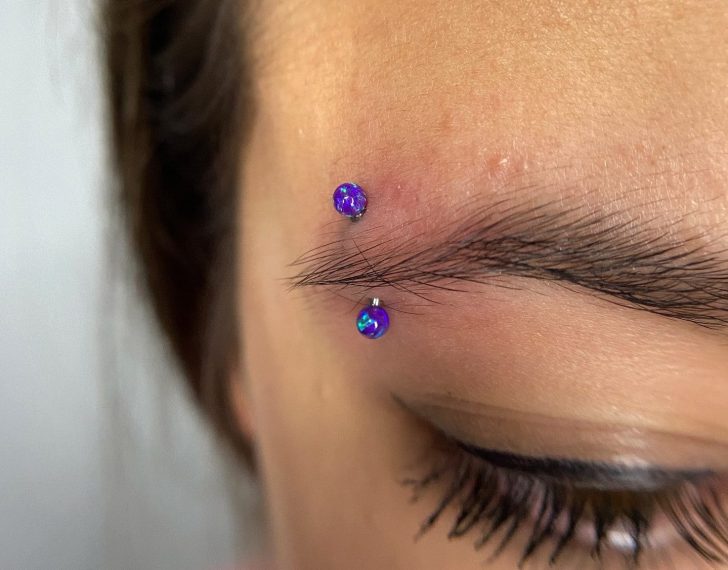
In conclusion, eyebrow piercings have the potential to leave lasting scars, although the severity and visibility of scarring can vary from person to person. Adhering to proper aftercare instructions, choosing a skilled piercer, and considering individual factors can help minimize the risk of scarring. If scarring does occur, various treatment options are available to reduce its appearance. However, it’s crucial to understand that everyone’s body reacts differently to piercings, and individual results may vary.
Frequently Asked Questions (FAQ)
1. How long does it take for an eyebrow piercing to heal?
The healing time for an eyebrow piercing varies from person to person, but it typically takes around six to eight weeks. During this period, it’s important to follow proper aftercare instructions provided by your piercer to ensure optimal healing. Factors such as individual healing abilities, overall health, and adherence to aftercare routines can influence the healing process. It’s crucial to be patient and allow your body enough time to heal before changing or removing the jewelry.
2. Can eyebrow piercings cause infections?
While proper aftercare can significantly reduce the risk of infection, there is always a possibility of infection with any piercing. The eyebrow area is prone to bacteria, sweat, and oil buildup, which can increase the risk. It’s crucial to clean the piercing regularly using a saline solution or a mild, fragrance-free soap and avoid touching the piercing with dirty hands. Signs of infection include excessive swelling, redness, pain, warmth, and the presence of pus. If you suspect an infection, it’s essential to seek professional advice from your piercer or a healthcare provider who can recommend appropriate treatment, such as antibiotics if necessary.
3. Can eyebrow piercings lead to migration or rejection?
Eyebrow piercings can sometimes experience jewelry migration or rejection. Migration occurs when the body perceives the jewelry as a foreign object and gradually pushes it out. Rejection happens when the body completely pushes out the jewelry. These issues can be influenced by various factors such as the individual’s anatomy, healing abilities, jewelry material, and placement. Choosing high-quality jewelry and having the piercing done by a professional who considers your unique anatomy can help minimize the risk of migration or rejection. If you notice signs of migration or rejection, such as the jewelry shifting or becoming more superficial, consult your piercer or a healthcare professional for appropriate advice.
4. Are there any risks associated with eyebrow piercings?
Like any body piercing, there are certain risks associated with eyebrow piercings. These risks include infection, scarring, allergic reactions to jewelry, migration or rejection, and damage to underlying structures such as nerves or blood vessels. It’s essential to consider these risks before deciding to get an eyebrow piercing. Choosing a reputable and experienced piercer, following proper aftercare instructions, and being aware of your individual health factors can help minimize these risks.
5. Do eyebrow piercings hurt?
The pain experienced during an eyebrow piercing can vary from person to person. The sensation is often described as a quick, sharp pinch or pressure. Most individuals find the pain to be tolerable and short-lived. The pain level can also depend on individual pain tolerance and the piercer’s technique. Numbing creams or ice can be used to help minimize discomfort during the piercing process. It’s important to communicate with your piercer about any concerns you may have regarding pain and to follow their guidance for a smooth and comfortable experience.
6. Can I change the jewelry in my eyebrow piercing during the healing process?
It’s generally recommended to avoid changing the jewelry in an eyebrow piercing during the initial healing period. This is because the healing process can be disrupted, increasing the risk of infection or complications. It’s crucial to allow the piercing to fully heal before considering jewelry changes. Consult with your piercer for guidance on when it is safe to switch to different jewelry options or styles.
7. How can I minimize the visibility of scars from an eyebrow piercing?
While some individuals may experience minimal scarring or no scarring at all, others may develop more noticeable scars after an eyebrow piercing. To minimize the visibility of scars, there are several approaches you can try. Silicone-based scar gels or sheets can be applied directly to the scarred area to help hydrate and protect the skin, reducing the appearance of scars over time. Medicated creams or ointments containing ingredients like corticosteroids or retinoids can also be beneficial in promoting healing and reducing scar formation. Additionally, laser therapy can be considered for more severe scarring, as it stimulates collagen production and reduces discoloration. It’s important to consult with a dermatologist or healthcare professional to determine the best approach for your specific situation.
8. Can I get an eyebrow piercing if I have a history of keloid scars?
If you have a history of keloid scars, it’s important to approach eyebrow piercings with caution. Keloids are raised and thickened scars that extend beyond the original wound, and individuals who are prone to keloid formation have a higher risk of developing them after a piercing. Discuss your concerns with a professional piercer and consult with a dermatologist or healthcare professional to assess the potential risks and benefits in your particular case. They can provide personalized advice based on your medical history and recommend appropriate measures to minimize the risk of keloid formation.
9. How do I choose a reputable piercer for my eyebrow piercing?
Choosing a reputable piercer is crucial to ensure a safe and successful eyebrow piercing experience. Here are some tips to help you find a professional piercer:
- Research: Take the time to research and read reviews about piercing studios in your area. Look for studios that have positive feedback and a good reputation for their expertise and professionalism.
- Recommendations: Ask for recommendations from friends, family, or acquaintances who have had positive experiences with piercings. Personal referrals can provide valuable insights into the skills and practices of piercers.
- Visit the Studio: Before making a decision, visit the studio in person. Observe the cleanliness, sterilization practices, and overall professionalism of the staff. A reputable piercer should be open to answering your questions and addressing any concerns you may have.
- Certification and Experience: Inquire about the piercer’s certification and experience. A professional piercer should have proper training and certification in piercing techniques and should be able to provide evidence of their qualifications.
By taking these steps, you can increase the likelihood of finding a skilled and trustworthy piercer who will prioritize your safety and provide you with proper guidance throughout the piercing process.
10. Are there any age restrictions for eyebrow piercings?
The legal age for getting an eyebrow piercing may vary depending on your location and local regulations. In many places, you need to be at least 18 years old to get a piercing without parental consent. However, some studios may have their own policies regarding age restrictions and parental consent requirements. It’s important to check with the piercing studio and adhere to the legal and studio-specific guidelines. If you are under the legal age, discuss your interest in getting an eyebrow piercing with your parents or legal guardians, and involve them in the decision-making process to ensure informed consent and support.
Remember, getting an eyebrow piercing is a personal choice that should be made after careful consideration of the potential risks and your individual circumstances. Consult with professionals, gather information, and prioritize your safety and well-being throughout the process.
Conclusion
While eyebrow piercings can be a trendy and exciting addition to your style, it’s essential to weigh the potential risks and long-term effects they can have on your skin. Scarring is a possibility, but by following proper aftercare procedures, choosing high-quality jewelry, and consulting with professionals, you can minimize the risk of excessive scarring and other complications.
Remember, everyone’s body heals differently, and individual experiences may vary. If you decide to go ahead with an eyebrow piercing, be sure to do your research, seek the expertise of a reputable piercer, and prioritize your safety and well-being throughout the process. By making informed decisions and taking the necessary precautions, you can enjoy your eyebrow piercing while minimizing the potential for lasting scars.
